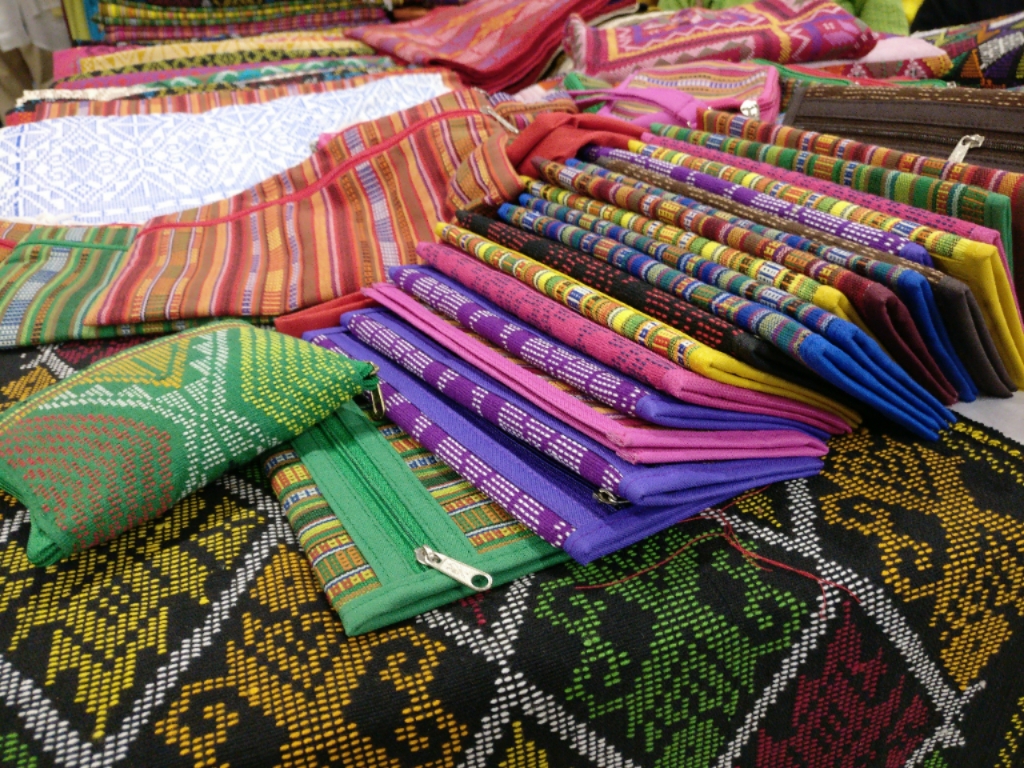The number of bazaars and fairs hit an all-time high during the start of the holiday season. But even before this five-month Filipino holiday celebration, it doesn’t even take a special occasion to necessitate the occurrence of these retail pop-ups. Take, for example, the growing popularity of artisan fairs such as MaArte, Artefino, and Habi. In the last few years, people who flock to such fairs have increased due in part to the wider acceptance of local crafts and artisan designs.

But just as rampant are what seems to be redundant themes, which include, but are not limited to, indigenous weaves. Call it a moment or even a growing appreciation for the craft. In every local fair we went to in the last three or four years, we saw clothes, accessories, and even homeware that use local weaving from the inabel of the north to the patadyong of Visayas and the geometric patterns of the southern indigenous groups.
We even made a guide on these kinds of woven fabric.
[READ: So you think you know your local weaves?]
You might say: It’s all good, right? Well, not exactly.
For the Center for International Trade Expositions and Missions executive director Pauline Suaco-Juan, the proliferation of crafts infused with local weaves somehow hurts brands more than they help.
Asked about her thoughts on the popularity of fairs on the first day of the PHx Fashion Conference last month, Suaco-Juan said some brands fall into the trap of using these local materials and mistaking it for branding or, more worse, succumb into a thinking that all it takes to be a Filipino brand is to use these weaves, albeit sometimes inappropriately.
“I just want to get away from the thinking that because you sell in fairs, or use inabel or other local weaves that your design is already local,” she said, adding that, conversely, just because other designers don’t use the same materials doesn’t make them any less of a Filipino brand.
Suaco-Juan even questioned the very notion of what makes a brand Filipino. For her, it takes more than the fact that its products are made in the Philippines or that the materials are sourced locally. Using American designers Marc Jacobs and Tory Burch as examples, she illustrates how despite being made outside the US, their designs are undeniably American. “It’s the creation, the creative execution.”
Hinge Inquirer executive vice president and group publisher Bea Ledesma, who was also a part of the panel discussion brought up another problematic side of this supposed new-found appreciation of local weaves: unfair labor practices.
“When we’re trying to be more sustainable and more mindful, we have to also question if this is fair trade. Are the female weavers being paid properly? Are they profiting from the work that they do instead of the middlemen profiting from their work?”
Recounting a trip we had in Basilan last year where we met Yakan weavers, Ledesma retold the story of these families of weavers who spend painstaking hours sitting down in stools to finish long panels of fabric only to be paid P100 per meter, amounting to a measly monthly pay of P2,000.
“When we’re trying to be more sustainable and more mindful, we have to also question if this is fair trade. Are the female weavers being paid properly? Are they profiting from the work that they do instead of the middlemen profiting from their work?”
She also lamented the lack of representation at the trade shows that almost amount to commodity fetishism. Ledesma pointed out that in most cases, the products are detached from its makers and the brands are sometimes not that transparent when it comes to the cause it claims to support, knowing that there is no way for consumers to trace this.
So the next time you go to a trade show or a Christmas fair, as you are likely to do so, you might want to think twice before buying weaving-centric products. It takes more than just a note in the brand tag that promises that they do fair trade or that most of the profits go to the artisans who make them. As smart consumers, it is up to us to be vigilant. Patrons should demand a more transparent supply chain. And they can do so starting by asking questions like “Who are the weavers?” “Is this fair trade?” “Did the sellers get this straight from the weaver or through a middle person/trader?”
As for local brands, support doesn’t end where the product goes from your stall to a shopper’s home. It’s also acknowledging that your business can be an accomplice in this injustice, and also doing something to make this right.
Surely, if you are creative enough, you will find that there are other ways to go about your design practice. One that is really representative of the people you support, and one that transcends mere commodification. Again, there is more to being a Filipino brand than patching on a weave into something.
Get more stories like this by subscribing to our weekly newsletter here.
Read more:
Underpaid and unacknowledged: The current state of Filipino weavers
Brands should protect the IP groups they work with, not exploit them
3 female weavers from Mindanao officially join the roster of Manlilikha ng Bayan